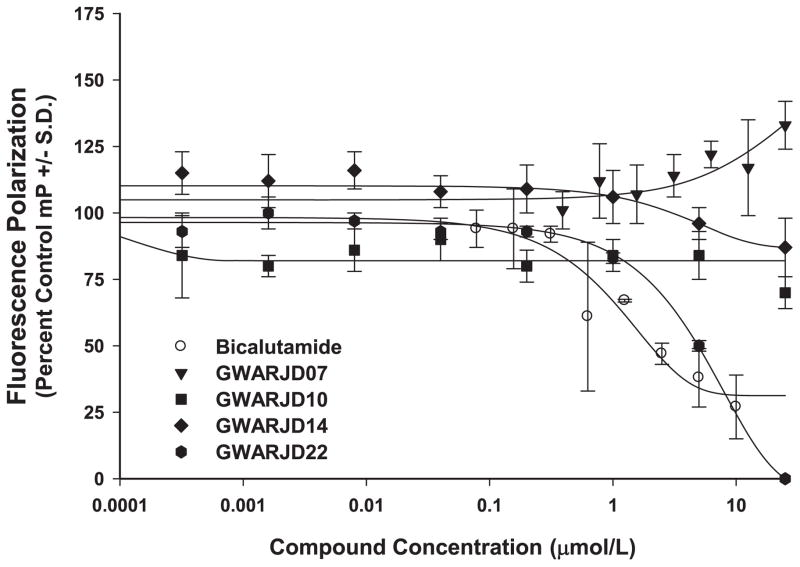Fig. 2.
Screening of compounds for anti-androgenic properties. The PolarScreen™ Androgen Receptor Competitor Assay was used to determine if the confirmed hits have anti-androgenic properties. Bicalutamide (Casodex®), a clinical antiandrogen, was used as a control. A classic dose response of bicalutamide competition with fluorescence tagged androgen (fluoromone) for binding to the ligand binding domain (LBD) of AR was observed. In contrast, the GWARJD inhibitors numbers 7, 10, and 14, which are the focus of this paper, did not compete with androgen for binding to LBD of AR in the same dose range. All 22 selected confirmed hits were tested in this manner, and based on this assay 17 were classified as non-anti-androgens while 5 were classified as antiandrogens, as represented by GWARJD22 showing a curve similar to bicalutamide. N = 3 per data point, nonlinear regression fit curves, representative from two assays performed for each compound.

